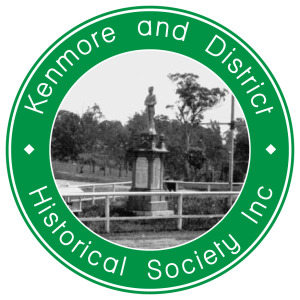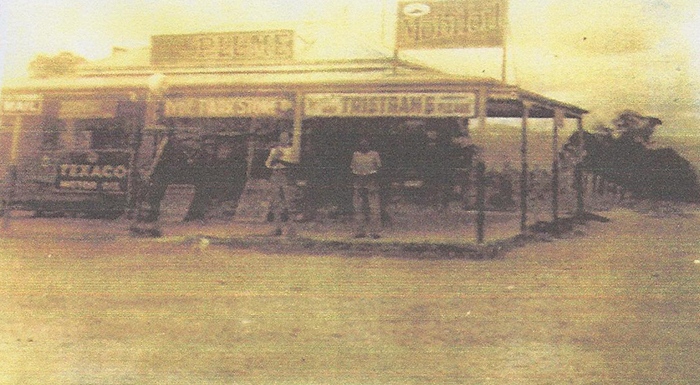Cataloguing Manual
REGISTRATION OF ARCHIVAL MATERIAL
Kenmore and District Historical Society Inc (KDHS) at the present time, this manual only deals with archival material but can be updated if KDHS starts collecting objects.
Each item acquired by KDHS must be entered into the registration book (Acquisitions Register) which becomes the primary reference of the collection. This book is only used for items entering the permanent collection; items on loan should be entered in a separate book (Loans Register).
Ideally one person should be responsible for the book. However, depending on the volume of donated material a team of people may be required to keep up to date with the registration process.
The registration book has 10 columns:
1. Registration number
This is a unique number based on a compound numbering system. First is the year of acquisition, followed by a dash and a sequential number. If the item is part of a collection a second dash is used followed by three letters to identify the collection; e.g. GI for Gibson. For each item in a particular collection a decimal point is used followed by further sequential numbers. Thus item six in the Gibson Collection (if it is the first item registered) will be 2014-1.6-GIB. At the back of the registration book there will be a listing of the letters followed by the full name used for each collection.
The registration number should be written in pencil on paper-based items and on the back of photographs, again in pencil.
2. Brief description of item
This column is the wide one, allowing about 5 to 8 keywords. A second row can be used but ideally the description is simply enough for anyone to identify whether or not they have an interest in the item.
The keywords used will become part of the search mechanism of an electronic database. Names pertinent to the item should be used including names of individuals, places and events, organisations and buildings.
Attention should be given to the type of item – e.g. map, photograph, paper-based archive, newspaper clipping.
The keywords for the above item are as follows:
General Store
Kenmore
Brookfield and Moggill Roads
Mildown, George
Cox, Frank
Both localised keywords and classificatory words (glossary) are used for database searching. The need for localised keywords is relatively obvious. The need for nationally recognised classificatory words as well provides a long-term professional status for the KDHS database and web site, allowing researchers to search on generic terms. The glossary terms for the general store will be ‘retail’ and ‘advertising’.
3. Glossary term 1 (primary)
4. Glossary term 2 (secondary)
These are classification terms that will be identified in a glossary and will also later be used in an electronic database for the purpose of searches. It is essentially a subject list with the standarisation of spelling and terminology, but is also called an ‘Authority List.
The National Library of Australia (NLA) provides a list of Australian-specific classification terms and is free to download. The draft glossary provided at the end of this paper has been taken from the NLA list; however, not all areas of classification have been used in the draft glossary for KDHS. For example, there are sections of terms for types of places and events that do not exist in the KDHS area.
MAV emphasises that glossaries are working documents and can be added to at any time.
The glossary sections require decision-making that has the most potential for debate and it may be appropriate for the Management Committee to review the decisions from time-to-time. For example, a photograph of a school sports day has ‘education’ and ‘sport’ as the potential two key words – which one of them is primary and which secondary may depend on the emphasis in the photograph.
5. Acquisition date
This is straight forward, except care must be taken not to use the recording date. The yellow and acquisition forms already developed by KDHS should still continue to be used to record items as they are donated; it may be appropriate to make them into one form.
6. Source
This will be the name of the person or family that has donated the item. There is not room in the book to write the address and contact details of the person so this information should be on the form, and the form filed with the physical location of the item.
If the item is a photograph a second line should be used to record the name of the photographer (if known). Again, the form which also deals with copyright matters should be filed with the physical location of the photograph.
7. Physical location of item
Ten archive boxes have been purchased for filing physical items. The box number should be recorded in this column. If filing cabinets are to be located in an accessible and environmentally friendly location at a future time, the record can be changed to show a drawer location.
8. Digitised (Y/N)
Record whether the item has been scanned, and the date it was done. If it has not been done leave this column blank.
9. Electronic location of item
At this stage a filing system for electronic storage has not been developed, suffice to emphasise that such a system must include the registration number in the Acquisitions Book.
10. Condition
There are 3 standards used to describe the physical condition of the item:
Good – the item is in a reasonable state of preservation; it is clean and in a stable condition; any deterioration is minor and does not distract from its research potential.
Fair – the item is in need of some conservation before it is used for research. (Priority for scanning)
Poor – the item is not structurally sound and will have no research value if steps are not taken to conserve it.
ELECTRONIC CATALOGUE AND STORAGE
There is a range of cataloguing software available with varying levels of sophistication, and they are priced to match. Three summaries are attached – Maxus, Adlib and Vernon.
The storage capacity of a computer is important particularly for photographs and oral histories. One option is cloud storage such as dropbox.
If cloud storage is not selected for use, the MAV manual recommends an external hard drive as a good option.
GLOSSARY
The classificatory term is in bold followed by examples of inclusions.
administration – business records, minutes, correspondence,
advertising – bill board, shop sign, pamphlet, real estate,
accounting – financial records, budget, financial statement, audit, invoice
arts – painting, sculpture, performance, music, dance, drama, pottery, culture
commerce – office, bank, garage, accountant,
communications – telephone, newspaper, media,
community – groups, organisations, celebrations, fund raising,
education – school, classroom, teacher, playground, subject, assessment, report, medal, prize, school fete,
entertainment – theatre, cinema, restaurant, party, hotel,
event – accident, fire, war, weather,
family – people, wedding, lifestyle, leisure, anniversary, home, funeral, birth, pet
farming – market gardening, crop, dairying, cattle, sheep, livestock, machinery, tractor, horse,
health services – doctor, nurse, clinic, hospital, baby clinic, surgery,
housing – domestic architecture, estate, garden, streetscape, architect, builder,
landform – bushland, hill, national park, native animal, valley, drainage
land tenure – freehold, title, lease
law – police, police station, courthouse, regulation,
library – books, events, talking books, videos,
literature – fiction, novel, poetry, drama, non-fiction
local government – services, parks, reserves, town planning, environmental planning, rubbish collection,
mapping – surveying, aerial,
monuments – Kenmore War Memorial, Anzac Day, RSL
politics – politicians, election, pamphlet, tract, meetings, activism, lobbying
religion – church, mosque, synagogue, temple, chapel, priest, minister, rector. iman, rabbi, Sunday school, cemetery,
retail – shop, store, grocery, butcher, green grocer, clothes, commercial, furnishing, hardware, food, supermarket,
roads – bridges,
services (State and Federal governments) – post office,
sport – cricket, football, netball, basketball, rugby, soccer, Australian rules, golf,
suburbs – Kenmore, Kenmore Hills, Chapel Hill, Fig Tree Pocket, Pullenvale,
transport – vehicle, car, walking, bike, bus, train, cart, horses,
work – men, women, professional, trade, conditions, wages, salary,
youth – children, play,
REFERENCES
- The Small Museums cataloguing Manual Museums Australia Victoria (MAV)
- Australian Picture Thesaurus (APT) National Library of Australia



